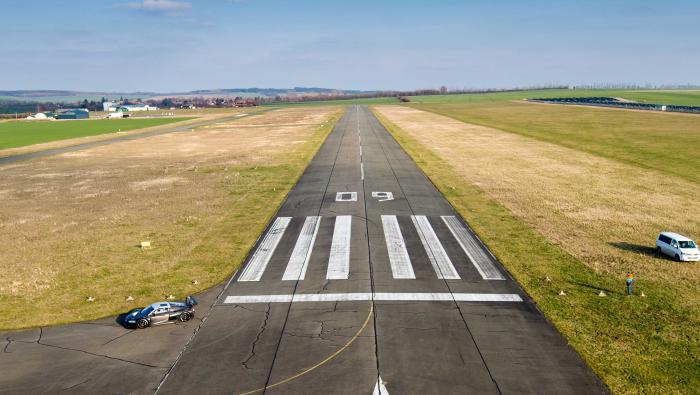For more than 10 years, Minneapolis-based Aerosim Technologies (www.flyaerosim.com) has been providing low-cost, high-fidelity software simulation training products.
As aircraft systems became more complex over the years, an increasing amount of training was diverted to learning to operate the various systems instead of how to fly the actual aircraft. The problem became even worse with the advent of the microchip, which ushered in highly sophisticated–and complicated to operate–pilot information, control and navigation systems that required ever deeper understanding.
In the late 1980s, when the airlines were recalling furloughed pilots, some carriers began using their flight simulators for the more mundane task of teaching pilots how to use the new, more complex flight management systems. It was hardly a cost-effective arrangement. Thus a market was created for systems-specific training devices.
According to Joe Hartman, director of sales and marketing, “Aerosim was founded in 1993 by a team of engineers who believed aviation training should be realistic, state of the art and provide an enjoyable learning experience.” Aerosim markets a family of training tools for ground school, distance learning and flight training using what it calls integrated training architecture (ITA). Aerosim combined its software with the hardware from Montreal-based partner Mechtronix Systems and “offers a vertically integrated training solution to the simulation and training community,” Hartman said.
Until recently, Aerosim had only sold its simulation to OEMs. The company has now begun to market its products directly to all segments of aviation and has created two new business divisions–military and bizjet/general aviation.
The bizjet/general aviation product line is marketed as the Aerosim Flight Management System Trainer (FMST). All software includes lesson-plan editor, an authoring tool for structured learning and embedded training capability. The company is offering Aerosim’s complete library of pilot-training software simulations direct to corporate flight departments and individual pilots via CD-ROMs. Pilots can now purchase their own simulation and training for various avionics systems, such as GPS, FMS, EFIS, PFD, MFD and AP/FD.
Complete “free play” simulations are available for products from Honeywell, Universal, Rockwell Collins and Smiths Industries for Boeing, Learjet, Challenger, Dash 8, CRJ, Falcon, Gulfstream, Cessna, Beechjet and Embraer ERJ aircraft. The term “free play” refers to the ability to use the equipment as you wish rather than conforming to a specific training exercise. The equipment is designed to fully simulate its real-world equivalent.
Hartman said Aerosim’s FMS trainers provide accurate and detailed real-time simulation modeling to create a training environment that looks just like the real aircraft. The Challenger 604 FMS trainer, for example, includes Collins 6000 FMS and CDU, Collins MFD, generic ADI display and a generic autopilot.
Flight plans can be entered on the CDU and displayed on the MFD, then flown in a real-time environment. Interactions between the FMS and map displays are simulated and depicted as they are in most aircraft. A generic autopilot panel provides basic heading, altitude and speed commands, as well as the engagement of the FMS lateral and vertical modes. The system incorporates a real-world Jeppesen navigation database for the North American region, allowing for the entry of actual SID/STARs and approaches. (Hartman cautioned that the database is not current and is to be used for training purposes only.)
An interactive help and flight reference is included in the FMST to provide the user with information on how to operate the FMS training device. FMS-specific pilot manuals are not provided but can be purchased from the FMS manufacturer. Minimum PC requirements are Windows XP/2000/98, Pentium III or better processor, 128 MB RAM (256 recommended), CD-ROM Drive, XGA video card and monitor, audio playback support and mouse.
For those pilots with no glass cockpit experience, Aerosim provides simulation-based courseware with a product known as Aerosim JetPAC (a professional aircrew course) CRJ200 edition. JetPAC is pilot-training software in advanced avionics for those who have had no exposure to glass in a crew environment. It too is a free-play simulation, though it simulates the Rockwell Collins 4200 FMS, AP/FD, PFD and MCDU, as well as the Pro Line 4 EFIS, coupled with a professional eight-hour script to provide an interactive, comprehensive course in concepts, procedures, applications, real-world flight scenarios and system validations.
The company also offers a line of airline-related products, including Ascent flight-training devices and flight simulators that are qualified under FAA level 4, 5 and 6 and JAA FNPTII Std 2A. Aerosim, combined with Mechtronix Systems hardware, offers a range of flight-training devices from a level-4 device to a flight simulator.
Aerosim’s virtual maintenance trainer (VMT), also an airline-related product, is a PC-based training device that provides simulation and display of most aircraft systems, including displays, panels and indications. All systems are fully interactive and operate in a free-play manner. The VMT trainer can interface with an external simulated hardware, such as an MCP and CDU, if required (hardware sold separately).







